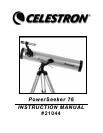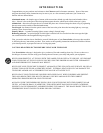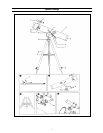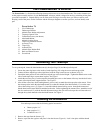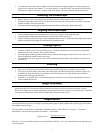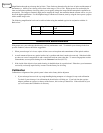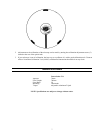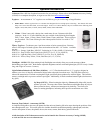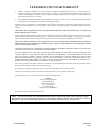
5
3. Your telescope also comes with a 3x Barlow lens which triples the magnifying power of each eyepiece (see
Magnification section of the manual). To use the barlow lens, insert the barlow lens directly into the focuser.
Then start by using the low power eyepiece such as the 20mm, and insert it directly into the barlow lens.
A
A
t
t
t
t
a
a
c
c
h
h
i
i
n
n
g
g
t
t
h
h
e
e
F
F
i
i
n
n
d
d
e
e
r
r
s
s
c
c
o
o
p
p
e
e
1. Remove the two small, silver thumbscrews located at the back of the telescope tube. See Figure 5.
2. Place the finderscope bracket over the two holes in the telescope tube, lining up the holes on the finderscope
bracket with those in the telescope tube.
3. Insert the thumbscrews through the finderscope bracket and thread them into the telescope tube.
A
A
l
l
i
i
g
g
n
n
i
i
n
n
g
g
t
t
h
h
e
e
F
F
i
i
n
n
d
d
e
e
r
r
s
s
c
c
o
o
p
p
e
e
1. Locate a distant daytime object and center it in a low power eyepiece in the main telescope.
2. Look through the finderscope and take notice of the position of the same object.
3. Without moving the main telescope, turn the adjustment thumb screws located around the finderscope bracket
until the crosshairs of the finder are centered on the alignment object.
F
F
i
i
n
n
d
d
i
i
n
n
g
g
O
O
b
b
j
j
e
e
c
c
t
t
s
s
1. Loosen the altitude slow motion rod locking screw (7) and the azimuth lock (11) on the base of altazimuth
mount, then move the telescope in the desired direction.
2. Look through the finderscope and pan the telescope until the object appears in the field of view. Once it’s in
the field, tighten the altitude and azimuth locks.
3. To center the object in the eyepiece, rotate the fine adjustment ring located on the altitude slow motion rod
assembly (3).
F
F
o
o
c
c
u
u
s
s
i
i
n
n
g
g
1. Once you have found an object in the telescope, turn the focusing knob (14) until the image is sharp.
2. To focus on an object that is nearer than your current target, turn the focusing knob toward the eyepiece (i.e.,
so that the focusing tube moves away from the front of the telescope). For more distant objects, turn the
focusing knob in the opposite direction.
3. To achieve a truly sharp focus, never look through glass windows or across objects that produce heat waves,
such as asphalt parking lots.
I
I
m
m
a
a
g
g
e
e
O
O
r
r
i
i
e
e
n
n
t
t
a
a
t
t
i
i
o
o
n
n
When observing with a Newtonian reflector telescope, the image seen will be correct for daytime viewing.
However the image will be rotated depending on the position of the focuser relative to the optical tube. Newtonian
telescopes are designed for astronomical use rather than for daytime land viewing.
M
M
a
a
g
g
n
n
i
i
f
f
i
i
c
c
a
a
t
t
i
i
o
o
n
n
The magnification (or power) of a telescope varies depending upon the focal length of the eyepiece being used and the
focal length of the telescope.
The PowerSeeker telescope has a focal length of 700mm and comes with a 20mm 1¼" eyepiece. To calculate
magnification, use the following formula, in which FL = focal length:
Therefore, if you use the 20mm eyepiece your magnification is 700/20 = 35x. The same formula can be applied to any
of your eyepieces.
Magnification =
FL (telescope) in mm
FL (eyepiece) in mm



